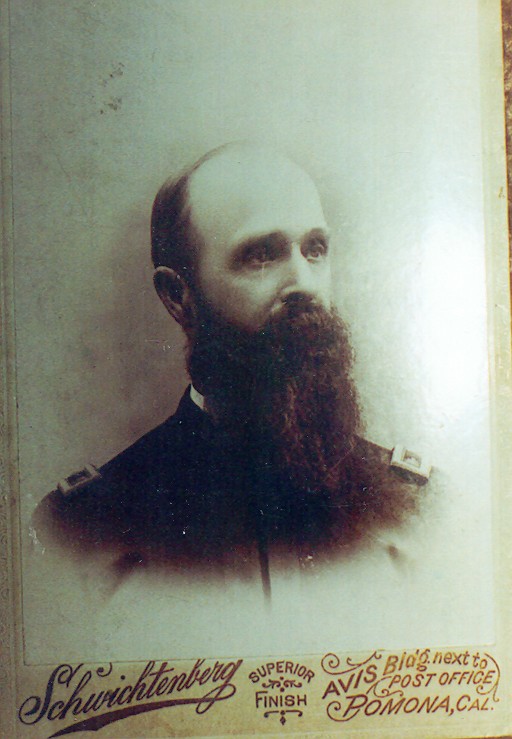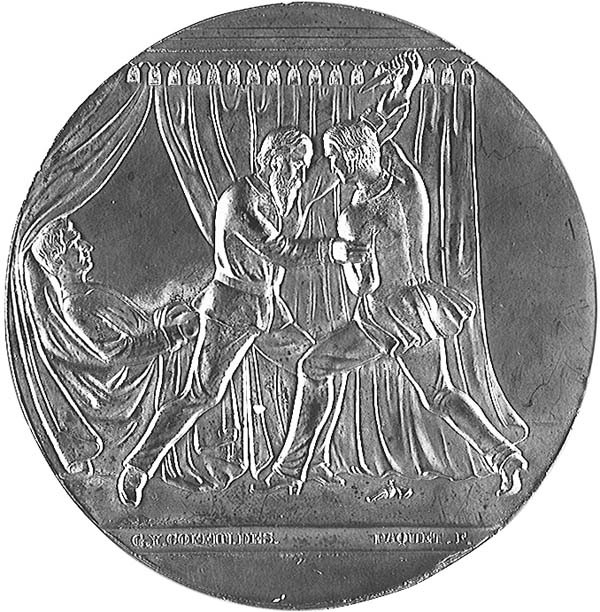The man who history forgot
By JOE BLACKSTOCK COLUMNIST
There aren’t any monuments or statues honoring George Foster Robinson, and you’ll rarely find him in even the most detailed history book. But on one dark day in the nation’s history, he became an American hero. Robinson, who spent the last years of his life in Pomona, was thrust into the limelight on the night of the assassination of Abraham Lincoln, 139 years ago tonight.
Robinson wasn’t at Ford’s Theater on the night of April 14, 1865, when John Wilkes Booth shot Lincoln. Only a few blocks away, he fought off another assassin trying to kill Secretary of State William H. Seward as part of a conspiracy to bring the government to its knees.
A 32-year-old Union sergeant, Robinson was recovering from battlefield wounds when he was temporarily assigned as an attendant to Seward. The secretary was bedridden because of injuries received when a carriage overturned 10 days before.
Lewis Payne, a Booth co-conspirator, burst into Seward’s home about 10 p.m. Robinson struggled with Payne before being struck in the head with the handle of his large knife. Stunned and bleeding, Robinson rose up and jumped on the assassin who was stabbing Seward. After a struggle, in which Robinson was cut in the back, Payne escaped. Roninson and Seward’s daughter then managed to stem the flow of blood from the secretary’s wounds.
Payne, who was captured shortly after the attack, was part of a conspiracy in the days after the end of the Civil War to kill not only Lincoln and Seward but also Vice President Andrew Johnson and General Ulysses S. Grant. Attacks on the latter two did not go forward.
Payne — who was also known as Lewis Powell — was a native Alabaman who fought for the Confederacy. He was captured at Gettysburg, later escaped and was recruited into the circle of Southerners planning the assault on Washington leaders.
Payne and other accused conspirators were tried – Robinson testified at the trial – and on July 7 were hanged. Both Seward and Robinson recovered from the wounds inflicted in the attack.
For those few moments on April 14, the spotlight was turned on the previously undistinguished Robinson. Born in tiny Hartford, Maine, he had been educated at two colleges before returning to work in his father’s farming and lumber interests near Island Falls in northern Maine. Midway through the Civil War, Robinson enlisted in Company B of the 8th Maine Volunteer Infantry. On May 20, 1864, he was wounded in the knee at the Battle of Petersburg near Richmond, Virginia, and spent much of the next year in Washington-area hospitals before being assigned as Seward’s aide.
His heroics did not go unrewarded. He became a clerk in the War Department, until the Maine Legislature petitioned Congress asking that their favorite son be honored in a more appropriate way. In 1871, Robinson was awarded the Congressional Gold Medal, the same national award given notables from Thomas Edison to Rosa Parks to Tony Blair. In addition to awarding him the specially crafted $2,000 gold medal, the House of Representatives voted Robinson $5,000 in cash, “commemorative of (his) heroic conduct.”
As a bonus, he was promoted to Major and given a position as Paymaster of the Army. It was while serving in that capacity that Robinson first visited Southern California. In 1892, he bought 20 acres of orange trees on the east side of today’s Towne Avenue in Pomona, a ranch his son Edmund operated.
In 1896, Robinson retired from the military and moved with his wife Aurora to a Pomona house at 245 East Pasadena Street. The old soldier died at home of pneumonia at age 75 on August 16, 1907. He is buried at Arlington National Cemetery near Washington, D.C., next to Aurora, who died in January 1922.
In 1965, on the centennial of the attacks on Lincoln and Seward, Congress named Mount Sergeant Robinson, a 10,415-foot peak about 90 miles northeast of Anchorage, Alaska. The selection of a mountain in that state was in part because Seward, two years after Robinson saved his life, brokered the purchase of Alaska from Russia.
Also in 1965, the Maine Civil War Centennial Commission renamed May Mountain near Island Falls as Robinson Mountain.
But despite these honors long ago, Robinson remains almost anonymous as neither his birthplace in Maine nor his last hometown of Pomona having any marker or remembrance of his heroic actions.
Even the Internet has contributed toward obscuring his memory. The clerk of the House of Representatives lists on a Web site a short biography of those who have received the Congressional Gold Medal. In this Web site, Robinson is listed as having been born in Ohio in 1844 and dying there in 1917. The Web site has somehow mixed him up with a George Foreman Robinson, a distinguished lawyer, Union soldier and mayor of Ravenna, Ohio, according to the Ravenna Library. That Robinson, though twice a Civil War prisoner of war himself, never received the prestigious gold medal.
For George Foster Robinson — a national hero with a gold medal and his name on two mountains — fame has been very much fleeting. Note: Great assistance in the research of this column came from the tireless efforts of Tim Cooper of the Buckfield Historical Society in Maine. Historian Lorraine Parsons of Canton, Maine; Lisa Friedman of the Daily Bulletin’s Washington bureau, Bruce Guter of the Pomona Public Library, and the reference desks of the Upland and San Francisco public libraries were also invaluable in this work.
Joe Blackstock writes on Inland Valley history. He can be reached by e-mail at j_blackstock@dailybulletin.com or by calling (909) 483-9382.
On the hallway’s other wall is a history of United States Mints and an exhibition featuring the nearly 300 people who have been awarded Congressional gold medals (most of which were minted in Philadelphia). The first gold medal was awarded to George Washington. All Presidents and many military heroes have received gold medals, which show a likeness of the recipient. Gold medals have also been awarded to a diverse list of Great Americans, including Jesse Owens, John Wayne, Bob Hope, Marian Anderson, Walt Disney, Jonas Salk, Lady Bird Johnson, Joe Louis, Elie Wiesel, Matthew Perry, Robert Frost, and Harry Chapin.
There is also one for George Foster Robinson, whose story deserves to be told. He was a wounded Civil War soldier assigned to protect Lincoln’s Secretary of State William Seward (the man who negotiated the purchase of Alaska) in 1865. On the fateful night Lincoln was assassinated, Seward was also targeted for assassination. Lewis Powell
broke into the Secretary’s quarters and rushed in on the sleeping Seward. Robinson interceded and though stabbed numerous times, managed to thwart the assailant and save Seward’s life.
Wednesday, 1 March 1871
Joint Resolution for the Relief of George F. Robinson, Eighth Regiment Maine Volunteers.
Be it resolved by the Senate and House of Representatives of the United States of America in Congress assembled, That the Secretary of the Treasury be, and he is hereby, directed to pay to George F. Robinson, late a Private in the Eighth Regiment of Maine Volunteers, the sum of five thousand dollars, out of any money in the treasury of the United States not otherwise appropriated.
SEC. 2. And be it further resolved, That the Secretary of the Treasury be, and he is hereby, directed to cause to be prepared and presented to the said George F. Robinson a gold medal, with appropriate devices and inscriptions, commemorative of the heroic conduct of the said Robinson, on the fourteenth day of April, eighteen hundred and sixty-five, in saving the life of the honorable William H. Seward, then Secretary of State of the United States; the expense of said medal to be paid out of any money in the treasury not otherwise appropriated. 16 Stat. 704
Medals are often larger in diameter and weight than most coins. The medal honoring George F. Robinson, the hero of the night of April 14, 1865, who stopped a co-conspirator of John Wilkes Booth’s from killing Seward, measures 77 millimeters in diameter. That is more than twice the diameter of a Morgan dollar.
- ROBINSON, GEORGE F
- LT COL USA
- DATE OF DEATH: 08/15/1907
- BURIED AT: SECTION EAST SITE 4733
ARLINGTON NATIONAL CEMETERY
Michael Robert Patterson was born in Arlington and is the son of a former officer of the US Army. So it was no wonder that sooner or later his interests drew him to American history and especially to American military history. Many of his articles can be found on renowned portals like the New York Times, Washingtonpost or Wikipedia.
Reviewed by: Michael Howard


